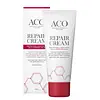What's inside
What's inside
 Key Ingredients
Key Ingredients

 Benefits
Benefits

 Concerns
Concerns

 Ingredients Side-by-side
Ingredients Side-by-side

Nelumbo Nucifera Callus Culture Extract
AntimicrobialDicaprylyl Carbonate
EmollientMethyl Trimethicone
Skin ConditioningCetyl Ethylhexanoate
EmollientPhenyl Trimethicone
Skin ConditioningPentaerythrityl Tetraethylhexanoate
EmollientButylene Glycol
HumectantCitrus Junos Seed Extract
AntioxidantMagnolia Officinalis Bark Extract
AntimicrobialArachidyl Alcohol
EmollientPolymethylsilsesquioxane
Jojoba Esters
EmollientAmmonium Acryloyldimethyltaurate/Vp Copolymer
Cetearyl Alcohol
EmollientPanthenol
Skin ConditioningBehenyl Alcohol
EmollientSodium Acrylate/Sodium Acryloyldimethyl Taurate Copolymer
Emulsion StabilisingArachidyl Glucoside
EmulsifyingWater
Skin ConditioningPolyisobutene
Dipotassium Glycyrrhizate
HumectantDipropylene Glycol
HumectantPhytic Acid
Sorbitan Oleate
EmulsifyingCaprylyl/Capryl Glucoside
CleansingGlucose
HumectantPropanediol
SolventNelumbo Nucifera Leaf Cell Culture Powder
Skin ProtectingPhytosteryl/Behenyl/Octyldodecyl Lauroyl Glutamate
Skin Conditioning1,2-Hexanediol
Skin ConditioningHydroxyacetophenone
AntioxidantNelumbo Nucifera Callus Culture Extract, Dicaprylyl Carbonate, Methyl Trimethicone, Cetyl Ethylhexanoate, Phenyl Trimethicone, Pentaerythrityl Tetraethylhexanoate, Butylene Glycol, Citrus Junos Seed Extract, Magnolia Officinalis Bark Extract, Arachidyl Alcohol, Polymethylsilsesquioxane, Jojoba Esters, Ammonium Acryloyldimethyltaurate/Vp Copolymer, Cetearyl Alcohol, Panthenol, Behenyl Alcohol, Sodium Acrylate/Sodium Acryloyldimethyl Taurate Copolymer, Arachidyl Glucoside, Water, Polyisobutene, Dipotassium Glycyrrhizate, Dipropylene Glycol, Phytic Acid, Sorbitan Oleate, Caprylyl/Capryl Glucoside, Glucose, Propanediol, Nelumbo Nucifera Leaf Cell Culture Powder, Phytosteryl/Behenyl/Octyldodecyl Lauroyl Glutamate, 1,2-Hexanediol, Hydroxyacetophenone
Water
Skin ConditioningOlus Oil
EmollientCocoglycerides
EmollientButyrospermum Parkii Butter
Skin ConditioningGlycerin
HumectantCanola Oil
EmollientPEG-100 Stearate
Hydrogenated Vegetable Oil
EmollientPanthenol
Skin ConditioningGlyceryl Stearate
Emollient1,2-Hexanediol
Skin ConditioningCetearyl Alcohol
EmollientSqualane
EmollientCeramide NP
Skin ConditioningDimethicone
EmollientTocopherol
AntioxidantHelianthus Annuus Seed Oil
EmollientPotassium Cetyl Phosphate
EmulsifyingXanthan Gum
EmulsifyingCitric Acid
BufferingPotassium Sorbate
PreservativeWater, Olus Oil, Cocoglycerides, Butyrospermum Parkii Butter, Glycerin, Canola Oil, PEG-100 Stearate, Hydrogenated Vegetable Oil, Panthenol, Glyceryl Stearate, 1,2-Hexanediol, Cetearyl Alcohol, Squalane, Ceramide NP, Dimethicone, Tocopherol, Helianthus Annuus Seed Oil, Potassium Cetyl Phosphate, Xanthan Gum, Citric Acid, Potassium Sorbate
Ingredients Explained
These ingredients are found in both products.
Ingredients higher up in an ingredient list are typically present in a larger amount.
1,2-Hexanediol is a synthetic liquid and another multi-functional powerhouse.
It is a:
- Humectant, drawing moisture into the skin
- Emollient, helping to soften skin
- Solvent, dispersing and stabilizing formulas
- Preservative booster, enhancing the antimicrobial activity of other preservatives
Cetearyl alcohol is a mixture of two fatty alcohols: cetyl alcohol and stearyl alcohol. It is mainly used as an emulsifier. Emulsifiers help prevent the separation of oils and products. Due to its composition, it can also be used to thicken a product or help create foam.
Cetearyl alcohol is an emollient. Emollients help soothe and hydrate the skin by trapping moisture.
Studies show Cetearyl alcohol is non-toxic and non-irritating. The FDA allows products labeled "alcohol-free" to have fatty alcohols.
This ingredient is usually derived from plant oils such as palm, vegetable, or coconut oils. There is debate on whether this ingredient will cause acne.
Due to the fatty acid base, this ingredient may not be Malassezia folliculitis safe.
Learn more about Cetearyl AlcoholPanthenol is a common ingredient that helps hydrate and soothe the skin. It is found naturally in our skin and hair.
There are two forms of panthenol: D and L.
D-panthenol is also known as dexpanthenol. Most cosmetics use dexpanthenol or a mixture of D and L-panthenol.
Panthenol is famous due to its ability to go deeper into the skin's layers. Using this ingredient has numerous pros (and no cons):
Like hyaluronic acid, panthenol is a humectant. Humectants are able to bind and hold large amounts of water to keep skin hydrated.
This ingredient works well for wound healing. It works by increasing tissue in the wound and helps close open wounds.
Once oxidized, panthenol converts to pantothenic acid. Panthothenic acid is found in all living cells.
This ingredient is also referred to as pro-vitamin B5.
Learn more about PanthenolWater. It's the most common cosmetic ingredient of all. You'll usually see it at the top of ingredient lists, meaning that it makes up the largest part of the product.
So why is it so popular? Water most often acts as a solvent - this means that it helps dissolve other ingredients into the formulation.
You'll also recognize water as that liquid we all need to stay alive. If you see this, drink a glass of water. Stay hydrated!
Learn more about Water